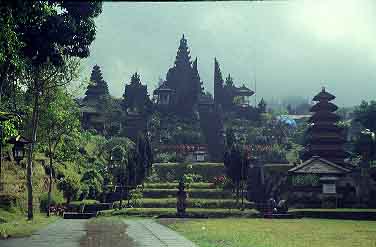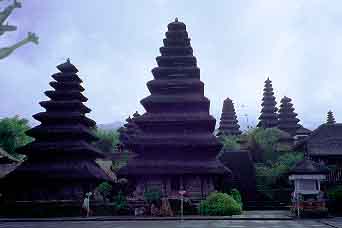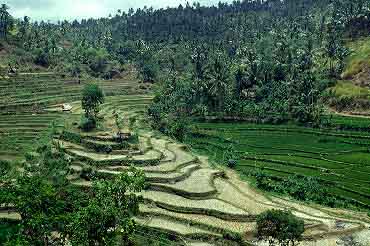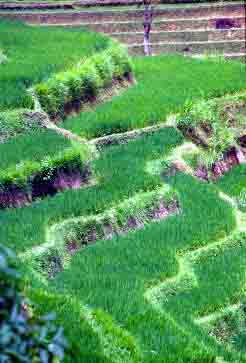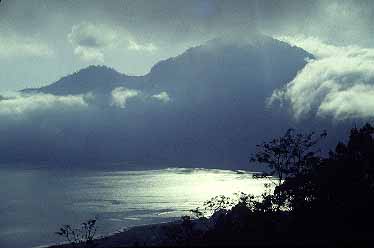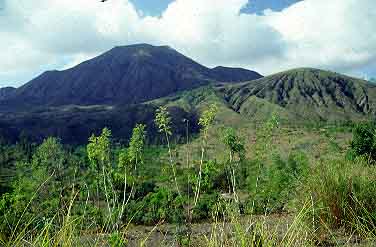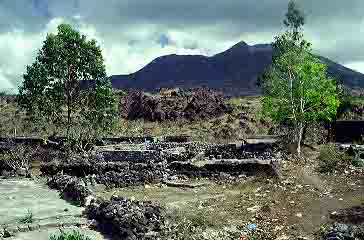|
|
|
REF: IND/074
|
REF: IND/075 |
Besakih - a "mother" and the biggest of all Balinese temples. It is beautifully located on the terraces of the southern slopes of Gunung Agung (3142 m) - the highest mountain on Bali. Besakih is actually a complex of about 30 smaller temples and the most important of them is called Puna Penastaran Agung and is dedicated to the holy trinity of Hinduism: Brahma, Vishnu and Siva. Fifty-two steep stairs lead to the sanctuary and along both sides of them sculptures symbolising good and bad spirits have been placed. The gate at the top of the stairs puts an end to the hike for non-believers and we also have to stop here. The remaining part of the temple we can only admire through numerous gates or by looking above the wall. The interior of the temple looks quite empty although there are many meru inside - apparently the largest selection on the whole island. The beginnings of Besakih apparently go back to the 11th century and because it is built of wood, all subsequent generations have rebuilt it again and again. Gunung Batur erupted in March 1963 and destroyed the temple and 1/5th of the island, buried 11,000 people and another 85,000 were left without a roof over their heads. This tragedy echoed all over the world. |
|
|
|
REF: IND/076
|
REF: IND/077
|
| Bali is famous for its rice terraces. The most famous are in Titraganga in the eastern part of the island. |
|
|
|
REF: IND/078
|
REF: IND/079 |
| A view from the village is called Penelokan, which means "a place to look" and the name is adequate indeed. We stand on the edge of an enormous volcanic caldera and inside an elongated Lake Batur glitters in the sunshine. |
|
|
|
REF: IND/080
|
REF: IND/081 |
The bottom of the caldera is filled with dark brown-greenish lava. The Batur Volcano erupted in 1917 for the first time burying about 1300 people and destroying 65 thousand houses. However, lava only reached to the bottom of the temple, which was read as a good sign given by gods, and people did not leave the village. The aftermath was bitter. Ten years later the volcano erupted again and even the temple did not survived. Only then did villagers delivered from death leave their homes and move to a safe place. A very beautiful view also stretches out to the opposite side of the caldera where other cones of volcanoes lazily stand, creating a mountain spine of the island. We can recognise Gunung Batukan (2275 m), Gunung Pohon (2069 m) and Gunung Catur (2098 m). Somewhere, in between them the beautiful and mysterious Bratan Lake is located with the small but very picturesque 17th-century Hindu-Buddhist Ulu Danau temple dedicated Dewi Danau - a goddess of waters. |
More pictures from Indonesia
Indonesia - Table of Contents
© Jacek Piwowarczyk, Indonesia 1993 |
